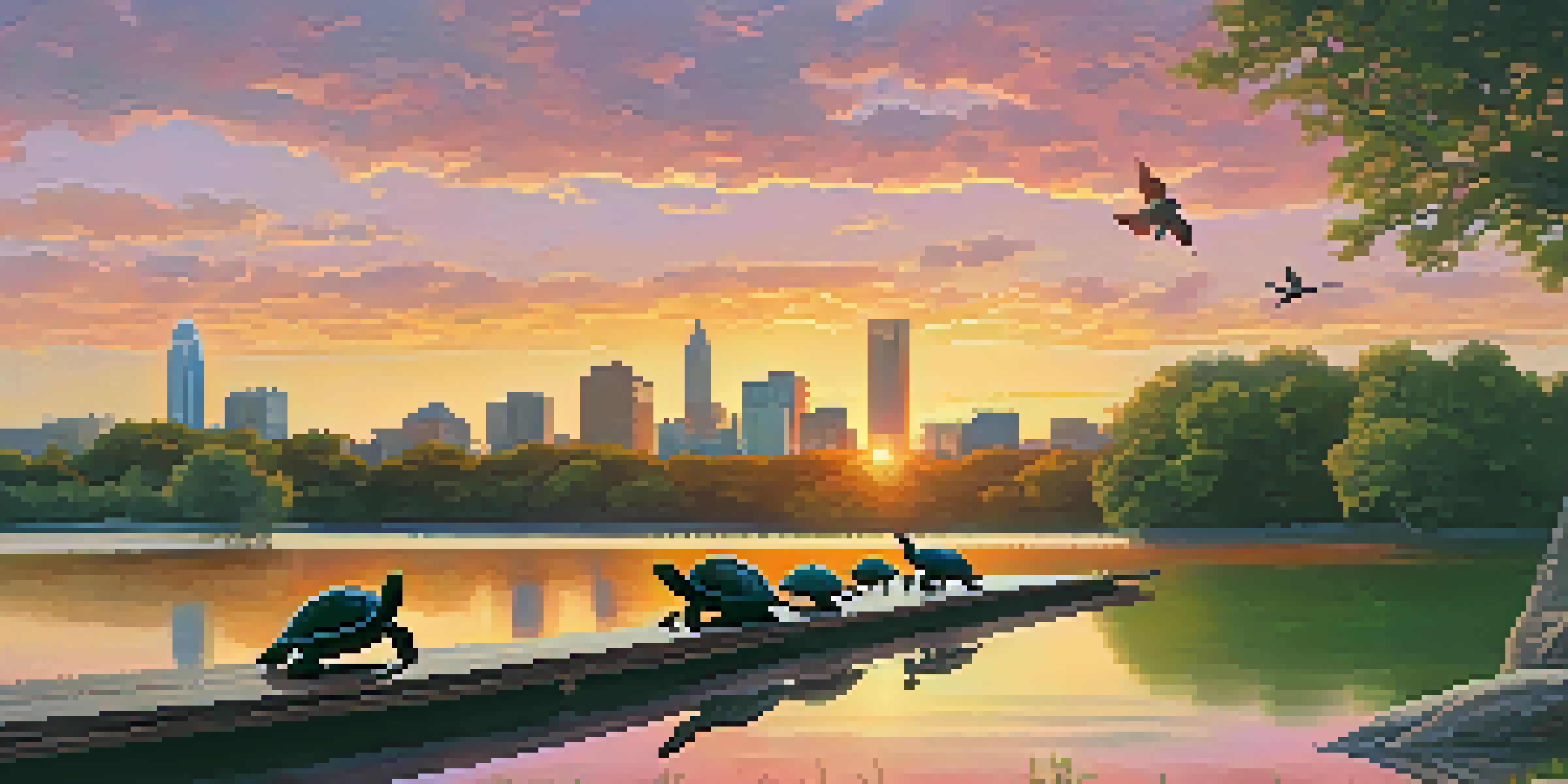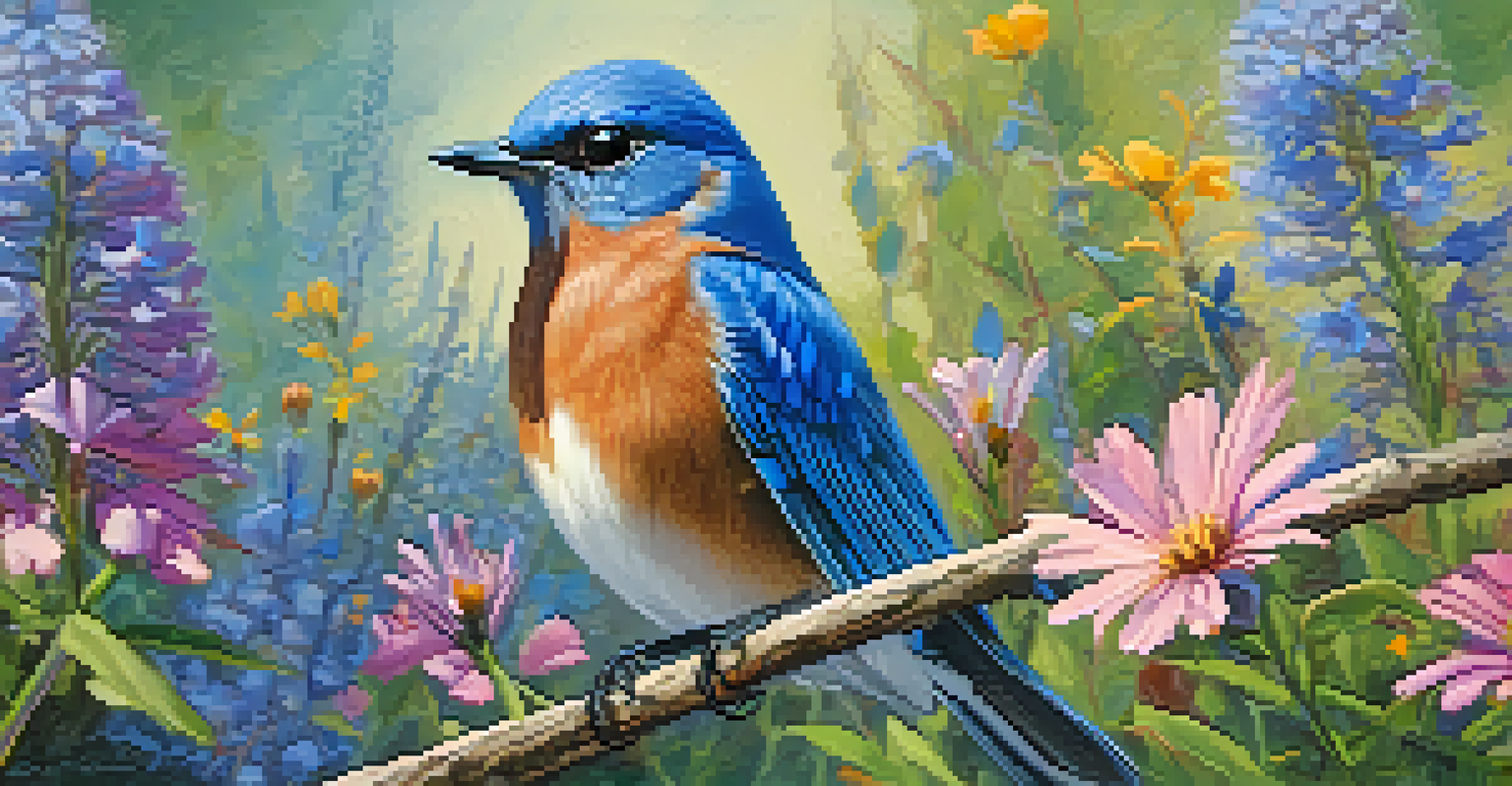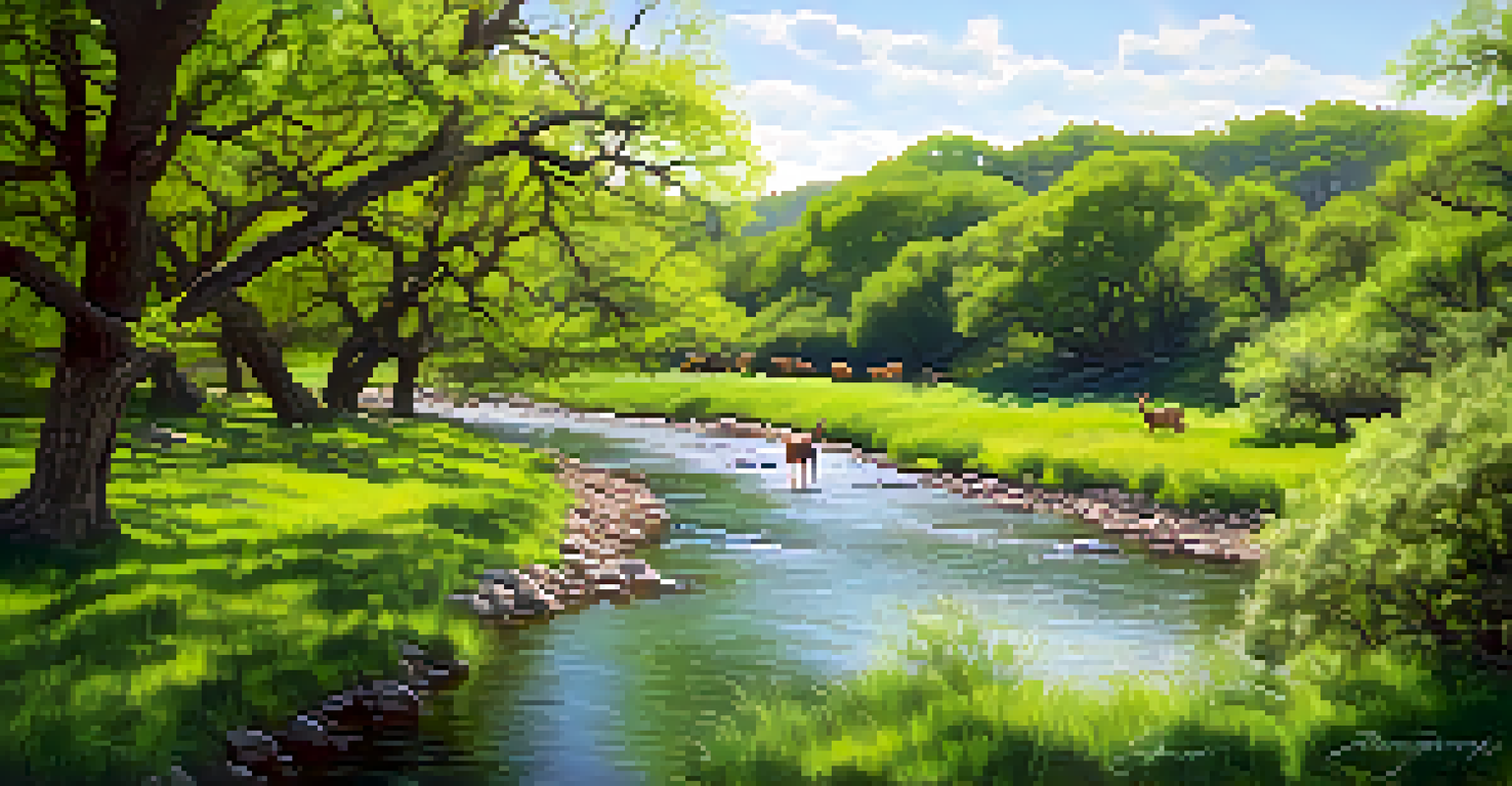Exploring Austin's Urban Wildlife: A Guide for Nature Lovers

Introduction to Austin's Unique Urban Ecosystem
Austin isn't just known for its live music and vibrant culture; it's also a haven for urban wildlife. The city’s parks, rivers, and green spaces provide a rich habitat for various animal species. From playful raccoons to majestic birds of prey, the diversity of wildlife here is a delightful surprise for nature lovers.
In every walk with nature one receives far more than he seeks.
With a mix of urban living and natural surroundings, Austin offers a unique opportunity to connect with wildlife right in the city. This guide will explore some of the best spots to observe these creatures and highlight the importance of preserving their habitats. Whether you're an avid birdwatcher or simply enjoy a leisurely stroll in nature, Austin has something for everyone.
As we dive deeper into this guide, keep in mind that observing wildlife is not just about watching; it's about understanding and respecting the delicate balance of our urban ecosystems. So grab your binoculars and get ready to explore the wild side of Austin!
Top Locations to Spot Urban Wildlife in Austin
Austin boasts a variety of parks and natural areas that serve as prime spots for wildlife watching. One of the most popular locations is the Barton Creek Greenbelt, where you can find everything from deer to various bird species. The lush landscape and flowing water make it a perfect habitat for many creatures.

Another great spot is the Lady Bird Lake, where you can see turtles basking on rocks and birds soaring overhead. The boardwalk along the lake is an ideal place for a leisurely walk while keeping an eye out for the local fauna. Don't forget your camera; you might catch a glimpse of a great blue heron or a playful otter.
Explore Austin's Wildlife Hotspots
Austin offers diverse locations like the Barton Creek Greenbelt and Lady Bird Lake where you can observe a variety of urban wildlife.
Lastly, the Zilker Botanical Garden offers a tranquil environment to observe butterflies, bees, and other pollinators. The combination of native plants and well-maintained gardens attracts a diverse range of species. It's a beautiful reminder of how urban spaces can coexist with nature.
Wildlife Watching Etiquette: Respecting Nature
While observing wildlife can be an exhilarating experience, it's essential to practice responsible wildlife watching. Keeping a safe distance is crucial; getting too close can stress animals and disrupt their natural behaviors. Use binoculars or a camera with a zoom lens to enjoy up-close views without intruding.
The earth has music for those who listen.
Additionally, avoid feeding wildlife, as it can alter their natural feeding habits and make them dependent on human food. Instead, let them forage and find their meals in their natural habitat. Remember, they are wild animals and should be treated as such.
Lastly, always follow park rules and guidelines to ensure the safety of both the wildlife and yourself. By doing so, you contribute to the preservation of Austin's urban wildlife, allowing future generations to enjoy the same experiences.
Birdwatching in Austin: A Feathered Paradise
Austin is a birdwatcher's paradise, home to over 300 species of birds throughout the year. From the iconic Texas bluebird to the swift and agile peregrine falcon, the city's diverse habitats attract a wide range of avian life. Spring and fall migrations are particularly exciting times to observe these beautiful creatures.
One of the best places to birdwatch is at the Hornsby Bend Bird Observatory. This area is known for its rich wetlands, attracting migratory birds and offering opportunities for spotting unique species. Bring along a bird guidebook or an app to help you identify the different birds you encounter.
Practice Responsible Wildlife Watching
It's crucial to maintain a safe distance from wildlife and avoid feeding them to ensure their natural behaviors and habitat are preserved.
Don't overlook the urban areas either; many birds thrive in city environments. You might spot a family of sparrows in your backyard or a majestic hawk perched on a streetlight. With a little patience and observation, you can discover the feathered friends that call Austin home.
The Role of Urban Wildlife in Ecosystem Health
Urban wildlife plays a vital role in maintaining the health of ecosystems, even in bustling cities like Austin. These species contribute to pollination, seed dispersal, and pest control, creating a balanced environment. For instance, birds help control insect populations, while bees and butterflies pollinate plants.
Moreover, urban wildlife can indicate the overall health of the ecosystem. A diverse range of species suggests a thriving habitat, while a decline in wildlife often points to environmental issues. By observing and supporting local wildlife, we can gain insight into the health of our urban surroundings.
It's important to remember that every small action counts. Whether it's planting native plants in your garden or advocating for green spaces, these efforts can help protect urban wildlife and contribute to a healthier ecosystem.
Engaging in Citizen Science: Contributing to Wildlife Research
One of the best ways to connect with Austin's urban wildlife is by participating in citizen science projects. These initiatives allow everyday people to contribute valuable data to researchers and conservationists. Whether it’s tracking bird migrations or documenting local wildlife sightings, your observations can make a difference.
Organizations like the Austin Audubon Society and the Texas Parks and Wildlife Department often host citizen science programs. Participating not only helps scientists gather important data but also enhances your understanding of local wildlife and habitats. It’s a win-win for both you and the environment.
Join Citizen Science Efforts
Participating in citizen science projects allows you to contribute to wildlife research while enhancing your connection to local ecosystems.
Plus, engaging in these activities fosters a sense of community among nature lovers. You’ll meet like-minded individuals who share your passion for wildlife and conservation, making the experience even more rewarding.
Sustainable Practices for Urban Wildlife Conservation
As urbanization continues to grow, it's crucial to adopt sustainable practices to protect wildlife habitats. Simple actions like reducing pesticide use and planting native gardens can create safe havens for local species. Native plants provide essential food and shelter for wildlife, supporting biodiversity in our urban areas.
Additionally, advocating for more green spaces in the city can help preserve natural habitats. Community gardens, parks, and wildlife corridors are vital for connecting fragmented habitats and allowing animals to thrive. Getting involved in local conservation efforts is a great way to make your voice heard.

Lastly, educate others about the importance of urban wildlife conservation. Share your knowledge and passion with friends and family, encouraging them to adopt sustainable practices as well. Together, we can create a healthier, more vibrant environment for both people and wildlife.